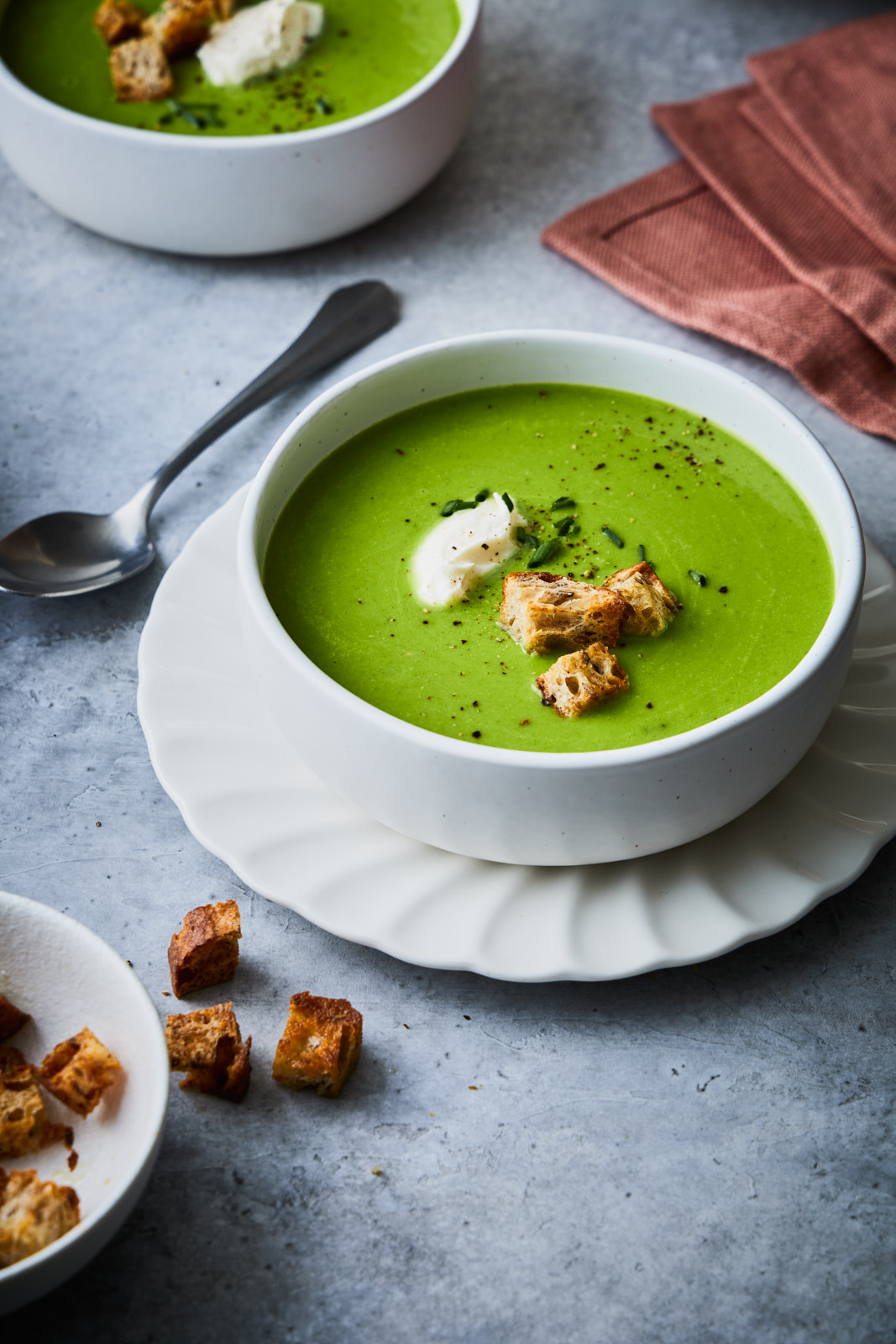Fresh Pea Soup: History, Recipes, and Nutritional Benefits
Fresh pea soup has roots dating back to ancient civilizations. Roman and Greek texts mention peas as a staple ingredient. By the Middle Ages, peas were widely grown across Europe, becoming a common ingredient in soups. In addition, during the Renaissance period, French chefs began refining pea soup recipes, adding herbs and cream to enhance flavor.
Popularity Across Cultures
Fresh pea soup enjoys global popularity, each culture adding its unique twist. In France, it’s known as “Potage Saint-Germain,” often including mint and leeks. Meanwhile, in the UK, pea soup, especially “Pea and Ham,” remains a traditional favorite. Scandinavian countries serve variants of pea soup during festive seasons, typically mixing peas with pork. In Asia, countries incorporate fresh peas into light, broth-based soups to leverage their natural sweetness. Each of these variations contributes to the universal appeal of fresh pea soup.
Key Ingredients in Fresh Pea Soup
Types of Peas Used
Fresh pea soup primarily uses garden peas, renowned for their sweet flavor and tender texture. These peas are typically harvested in spring, providing a burst of freshness essential to the soup. Alternatively, snap peas, with their edible pods, add a crunchy element. Frozen peas serve as a good substitute if fresh peas aren’t available, retaining most of their nutrients and flavor.
Essential Spices and Herbs
Herbs and spices enhance fresh pea soup, creating layers of flavor. Mint is commonly used, giving the soup a refreshing twist. Basil provides a subtle sweetness, complementing the peas’ natural flavors. Thyme and parsley add depth and an earthy touch. For spices, black pepper enhances the soup’s taste, while a pinch of nutmeg adds warmth. Garlic and shallots introduce a savory and aromatic component crucial for a balanced flavor profile.
Cooking Fresh Pea Soup: Techniques and Tips
Best Practices for Preparation
Choose Fresh Ingredients. Select vibrant green peas for maximum sweetness and color. Use fresh herbs to enhance flavor and avoid bitterness.
Blanch Peas. Boil peas briefly and immediately transfer them to ice water. This locks in color and nutrients, improving taste and appearance.
Blend Thoroughly. Process ingredients in a high-speed blender to achieve a smooth, creamy texture. Strain the soup if necessary to remove any fibrous bits.
Season Carefully. Add salt sparingly during cooking and adjust seasoning after blending. Herbs like mint and basil should be added at the end to maintain their freshness.
Use Stock Wisely. Incorporate a high-quality vegetable or chicken stock for depth of flavor. Avoid overloading the soup with too much liquid to retain its consistency.
Common Mistakes to Avoid
Overcooking Peas. Cook peas briefly to preserve their vibrant color and natural sweetness. Overcooked peas turn dull and lose flavor.
Neglecting Blanching. Skipping the blanching process leads to a dull-colored soup. Blanching preserves the peas’ bright green hue and fresh taste.
Improper Seasoning. Season the soup gradually and taste frequently. Adding too much salt or spices at the beginning can overwhelm the delicate flavor of the peas.
Ignoring Texture. Blend the soup until completely smooth for a refined texture. If the texture is gritty or chunky, it detracts from the overall experience.
Using Low-Quality Stock. Opt for high-quality stock with rich flavor. Low-quality stock makes the soup taste bland and less appealing.
Nutritional Benefits of Fresh Pea Soup
Health Impacts
Fresh pea soup offers several health benefits due to its nutrient-rich base. Peas are packed with vitamins such as vitamin A, C, and K, which support vision, immune function, and blood health. Rich in antioxidants, peas help combat oxidative stress, reducing the risk of chronic diseases. Each serving of fresh pea soup provides dietary fiber that aids digestion and helps maintain a healthy weight. Protein content in peas supports muscle repair and growth, making the soup a good option for vegetarians seeking protein sources.
Dietary Considerations
For those mindful of dietary needs, fresh pea soup is a versatile option. It’s naturally low in fat, yet high in essential minerals like iron, potassium, and magnesium, which support various bodily functions. If you’re watching your sodium intake, opt for low-sodium stock to keep salt levels in check. Fresh pea soup easily adapts to vegan and vegetarian diets by using vegetable stock and skipping dairy. To make it gluten-free, avoid ingredients like flour-based roux for thickening. Fresh pea soup can accommodate various dietary preferences without compromising its nutritional profile.
Serving and Presentation Ideas
Accompaniments
Enhance your fresh pea soup with complementary accompaniments. Offer crusty bread slices, garlic croutons, or breadsticks for a satisfying crunch. Add a dollop of crème fraîche or a swirl of Greek yogurt to each bowl for a creamy contrast. Garnish with fresh herbs like mint, parsley, or chives to add color and flavor. Sprinkle some crispy bacon bits or toasted pine nuts for texture. Pair with a light salad featuring seasonal greens and a citrus vinaigrette to balance the meal. Provide these options for a more personalized dining experience.
Creative Plating Techniques
Use creative plating to elevate your fresh pea soup’s presentation. Serve the soup in elegant bowls or bread bowls for a rustic touch. Drizzle a small amount of herb-infused oil or balsamic reduction on top of the soup for visual appeal. Create geometric patterns with thinly sliced radishes or carrots. Use edible flowers like nasturtiums or pansies to add a vibrant pop of color. Stack garnishes like microgreens or shaved Parmesan strategically to create a layered effect. Ensure each element is thoughtfully placed to turn your soup into a gourmet masterpiece.
Conclusion
Fresh pea soup offers a delightful blend of history, global influence, and culinary versatility. Whether you’re savoring a classic Potage Saint-Germain or experimenting with Asian-inspired variations, this dish adapts beautifully to any occasion. The key to a perfect fresh pea soup lies in using the freshest ingredients, mastering blending techniques, and ensuring proper seasoning.
Nutritionally, fresh pea soup is a powerhouse, rich in vitamins, antioxidants, fiber, and protein, catering to diverse dietary needs. Elevate your dining experience with creative serving and presentation ideas like pairing with crusty bread or garnishing with edible flowers.
Embrace the simplicity and elegance of fresh pea soup, and let it become a staple in your culinary repertoire.






